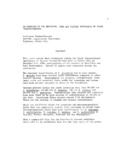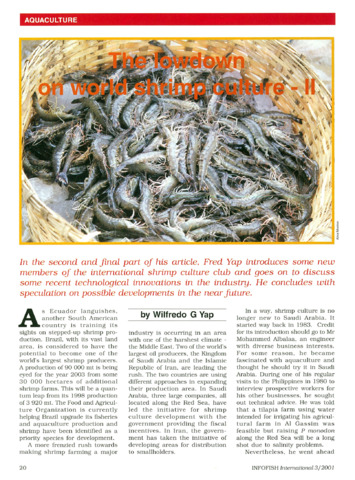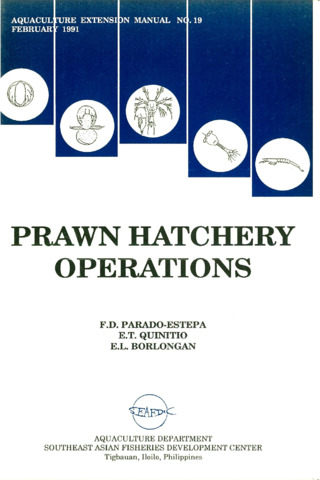| dc.identifier.citation | Ferraris, R. P., Parado-Estepa, F. D., de Jesus, E. G., & Ladja, J. M. (1987). Osmotic and chloride regulation in the hemolymph of the tiger prawn Penaeus monodon during molting in various salinities. Marine Biology, 95(3), 377–385. | en |
| dc.description.abstract | The effect of molting on osmotic and chloride concentrations in the blood of the prawn Penaeus monodon Fabricius (20±3 g) at various salinities was investigated. Prawns were obtained from ponds in Iloilo, Philippines, in 1984. They were stocked in salinities of 8, 20, 32 and 44‰, and their hemolymph was sampled during molt (Time 0), and then 0.125, 0.25, 0.5, 1, 2, 4, 6, 10 and 14 d after molting. Prawns during and immediately after molt tended to conform to the environmental osmolality. Subsequent postmolt (≧0.5 d) stages displayed more divergence from external salinity. The isosmotic point was higher (940±30 mOsm kg-1) during molt than during intermolt (663±8 mOsm/kg-1), suggesting different osmotic requirements in early molt. Hyperregulation of hemolymph chloride below 20‰ S, as well as isoionic point (301±6 mM), were independent of molting stage. At 20‰ S and above, newly molted (0 to 0.25 d post-molt) individuals tended to conform to the external chloride concentration while intermolt (≧0.5 d) post-molt individuals did not. Contribution of hemolymph chloride to hemolymph osmolality was greater during intermolt than during ecdysis, suggesting an important role for other negatively charged ions during molt. When molt occurred in 20‰ S (the test salinity most similar to the isoionic salinity), there was little or no change in hemolymph osmolality or chloride concentration from 0 to 14 d postmolt. At 8, 32 and 44‰ S, the change from molt to intermolt values in hemolymph osmotic and chloride concentrations was hyperbolic. Non-linear least-squares regression showed that prawns generally achieved intermolt values within 1 d after molting. Prawns at intermolt regulated hemolymph osmolality (620 to 820 mOsm kg-1) and chloride concentration (300 to 450 mM) at a much narrower range than during molt (520 to 1 170 mOsm kg-1 and 250 to 520 mM, respectively). Hemolymph osmolality was a more sensitive indicator of physiological response than hemolymph chloride concentration. Distribution and culture of P. monodon might be limited in low salinities by its ability to maintain a hemolymph osmolality ≧500 mOsm kg-1 during molt and ≧600 mOsm kg-1 in intermolt, and in high salinities by its capacity to reduce the hemolymph osmolality from values at molt to those in intermolt. Osmotic and chloride concentrations in the blood of P. monodon clearly varied with both molt stage and salinity of the medium. Dependence on external factors, however, gradually declined in older molt stages, suggesting a reduction in integument permeability and greater development of ion absorption/secretion mechanisms as the exoskeleton hardened. | en |



